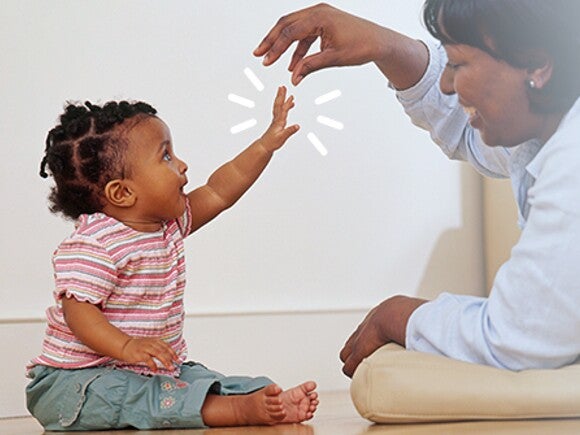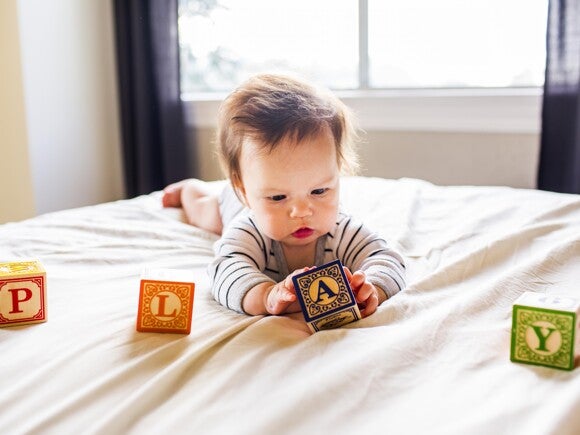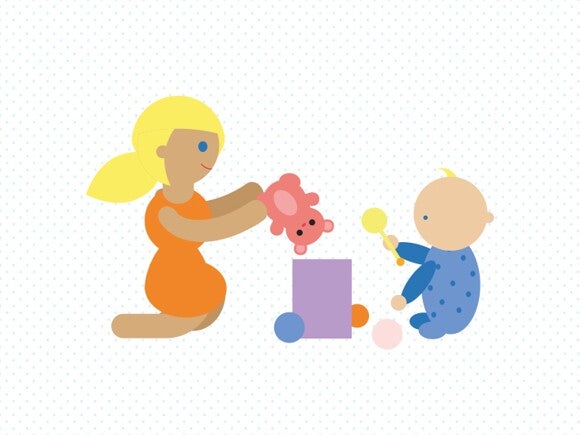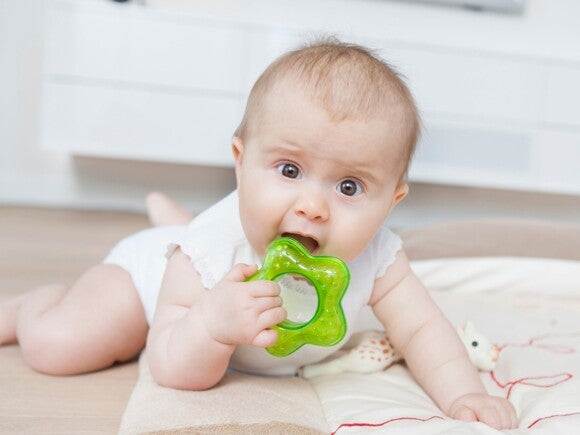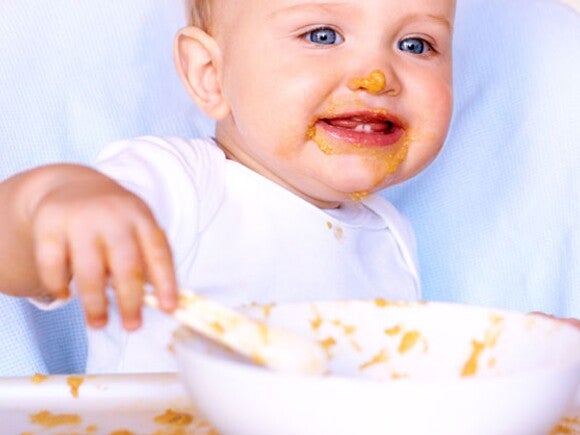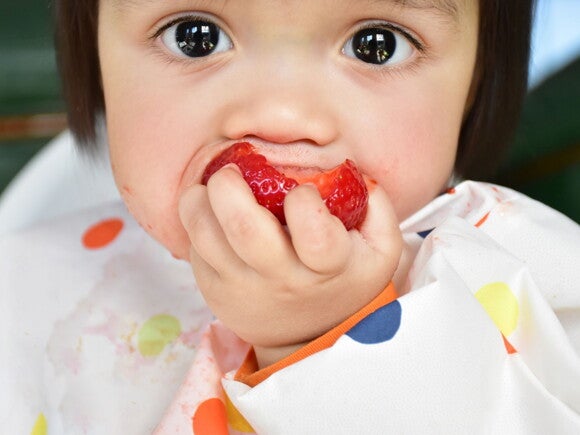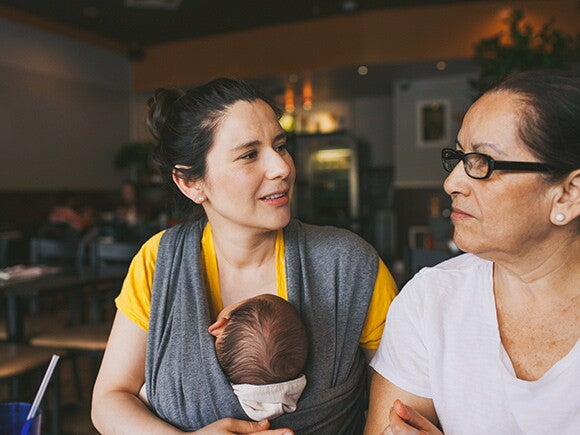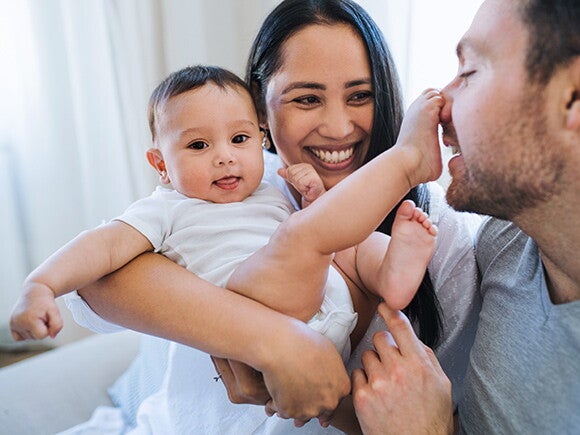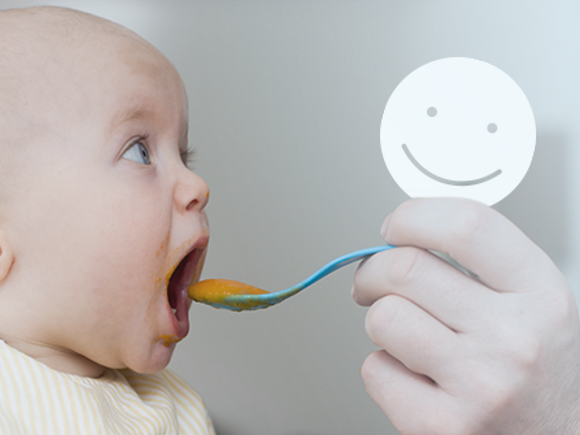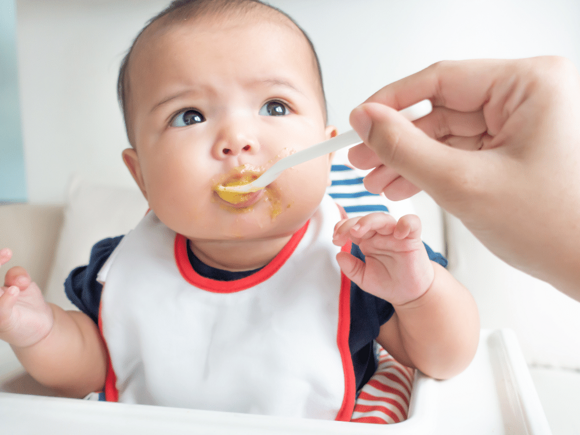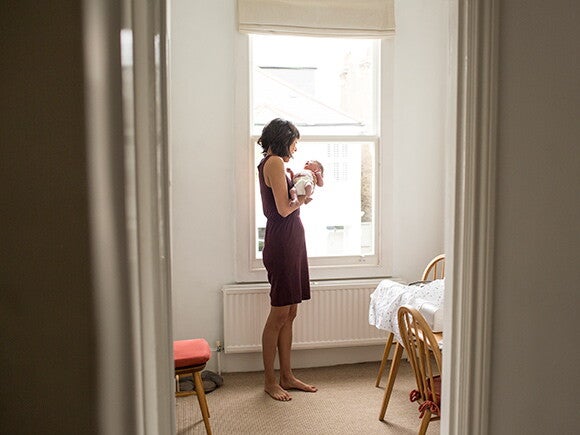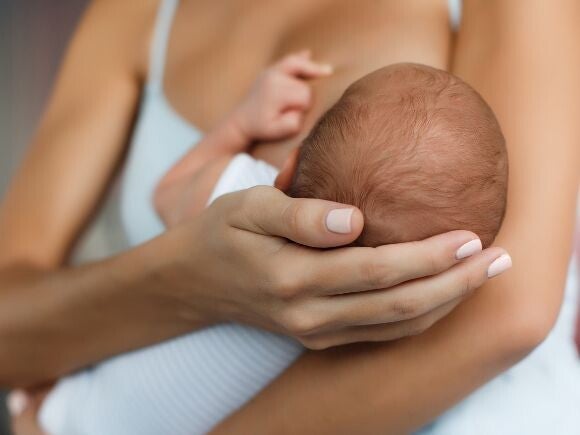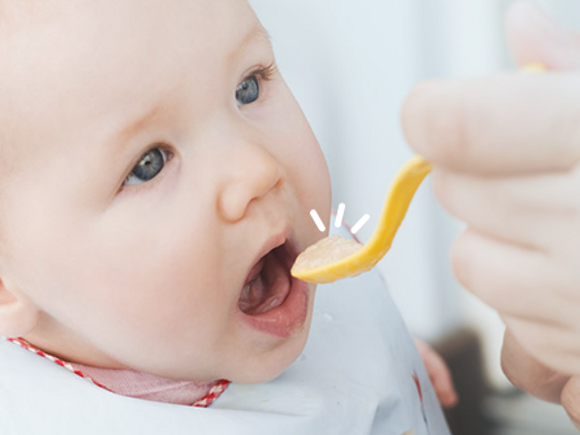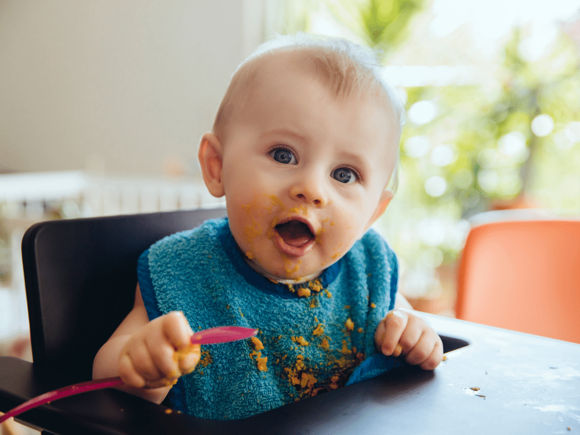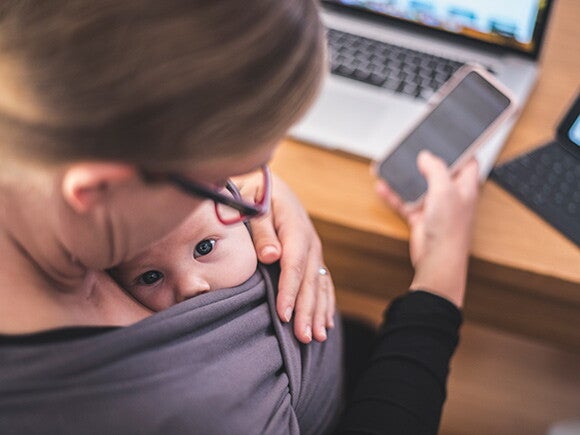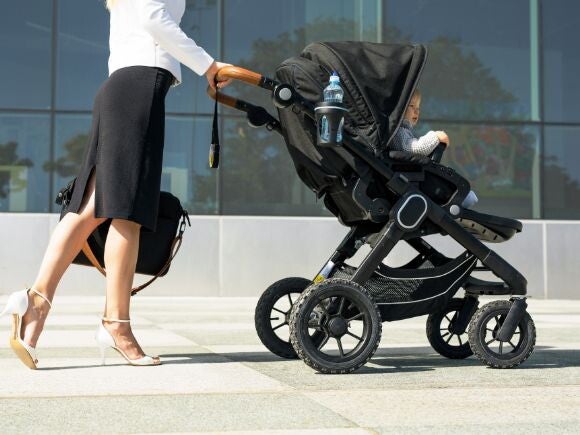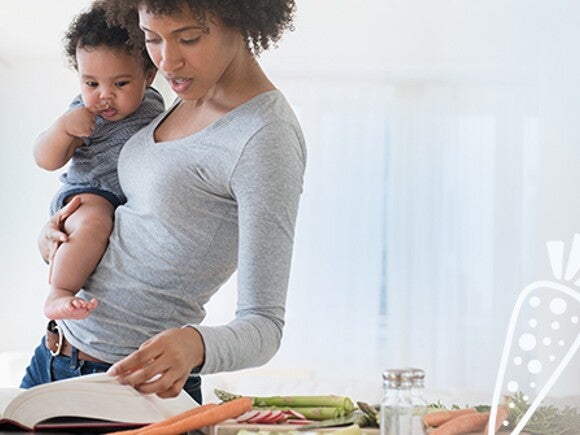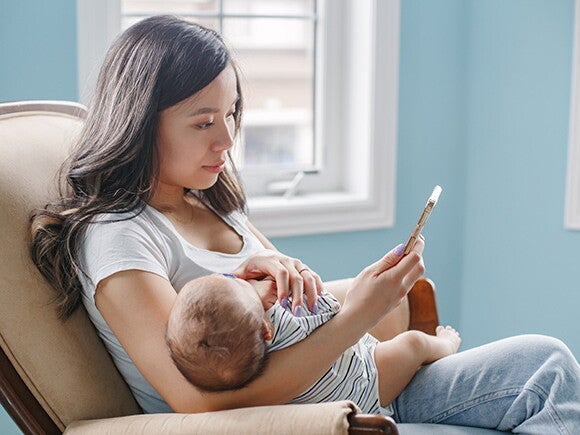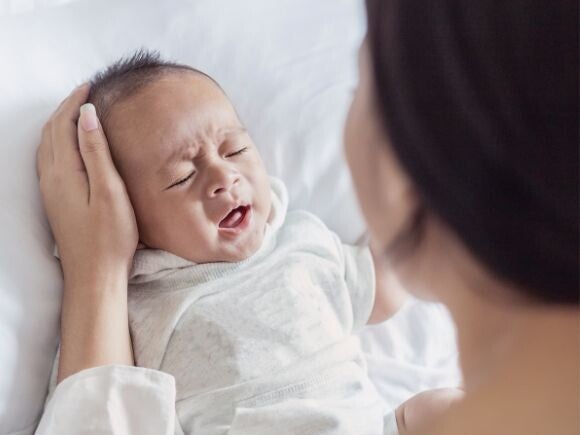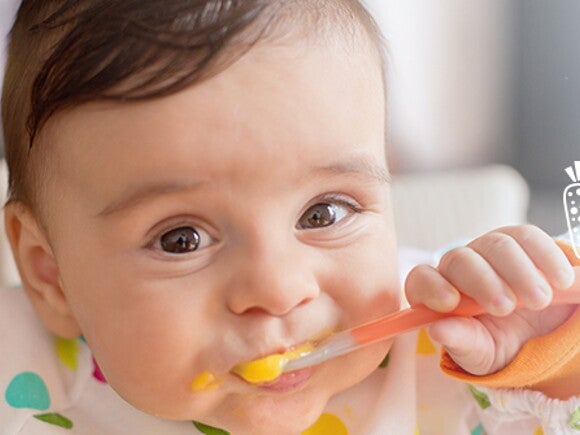If your baby hasn't started crawling yet, it won't be long before they do. Typically crawling occurs between seven and 10 months. Your little one’s ability to grasp is becoming more developed and they are now likely moving things from one hand to the other. Soon they will be able to catch themselves with their arms and legs if they start to topple over while sitting on the floor. Making creative and imaginary play part of your day together helps improve your baby’s physical abilities and brain development.
Every baby is unique and develops at their own pace. Wait for your baby to show you that they have the strength and developmental skills for the games you choose to play. Here are six fun activities to get you started…
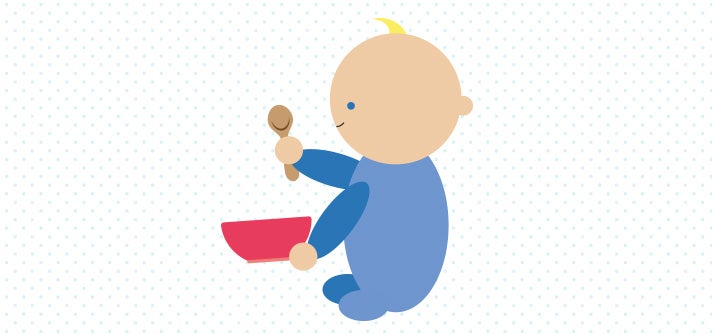
- What? Let’s get cooking
How? Let your little one play chef with wooden spoons, plastic bowls, and other non-sharp items from the kitchen.
Why? Your baby loves exploring new objects, using both hands to examine them. Their grasp is becoming more developed, so they’ll enjoy picking up and playing with things that are different shapes and sizes. It’s also never too early to introduce your child to the principles of healthy eating. As they get older, you can add in role-play games where you ‘cook’ meals together.
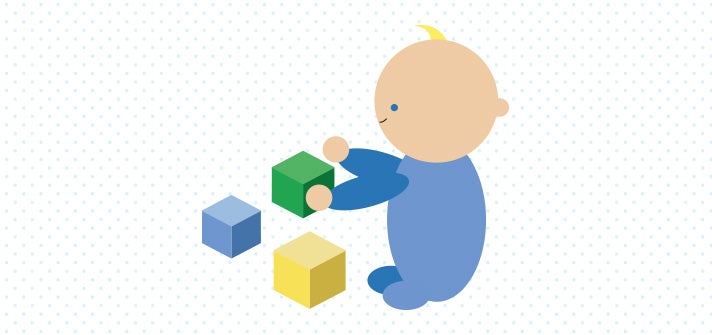
- What? Stack ’em up
How? Encourage your baby to stack building blocks on top of each other to make a tower. They’ll probably enjoy knocking them down as much as stacking them up! Any lightweight objects that can be placed on top of each other will work—wooden blocks, plastic rings, empty yoghurt pots, or plastic cups.
Why? Stacking games help develop your baby’s fine and gross motor skills, as well as improving hand-eye coordination. Your little one will also learn about cause and effect when the tower comes tumbling down!
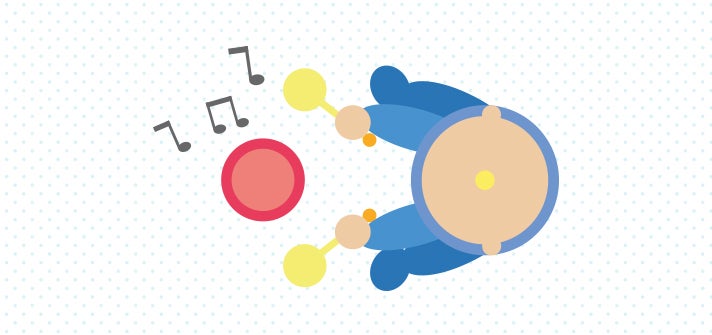
- What? Shake, rattle, and bang
How? Put some music on and see your little one start to sway and move to the rhythm. Encourage them to shake or drum to the beat—dried rice in a bottle makes a great shaker, or you could use the spoons and bowls you played with in the kitchen as a drum kit. Anything that can rattle, bang, or makes a noise is an instrument!
Why? Dancing, moving, and making musical sounds together are great ways for you and your baby to be creative and to have fun. At this age, your little one loves moving around, bouncing up and down, and rocking back and forth. Musical playtime can also help boost your baby’s speech development as they’ll learn to recognize and respond to changes in rhythm—a skill that, if learned early, can have long-lasting effects.
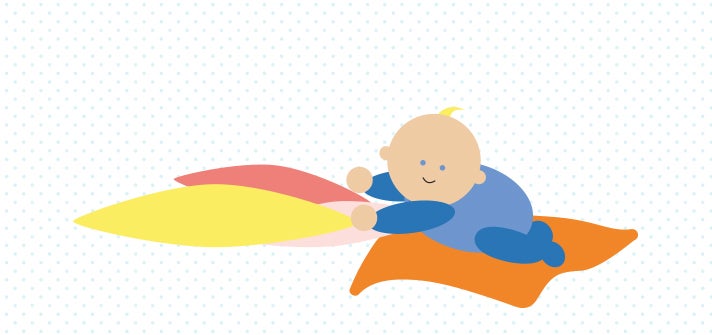
- What? Adventure playground
How? When your baby has the skills to crawl, use cushions and blankets to make ‘hills’ and tunnels to crawl over, under, and around.
Why? This game will help your baby practice movement in an enjoyable way. It’ll also help develop balance, strength, and problem-solving skills.
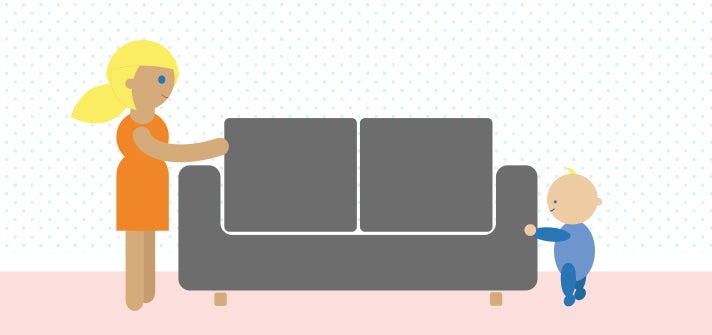
What? Cruise control
How? Push a sofa against a wall, preferably in a room with soft floor or carpet. Help your baby to stand at one end and then encourage them to make their way along to the other end. If they seem reluctant to do this, try just holding their hands and encouraging them to take a few steps. Or try again in a couple of weeks.
Why? Once your baby has mastered the art of crawling, it won’t be long before they begin to pull themselves up to a standing position and starts cruising. Practicing this skill will help build confidence and the muscle strength needed for eventually learning to walk.
